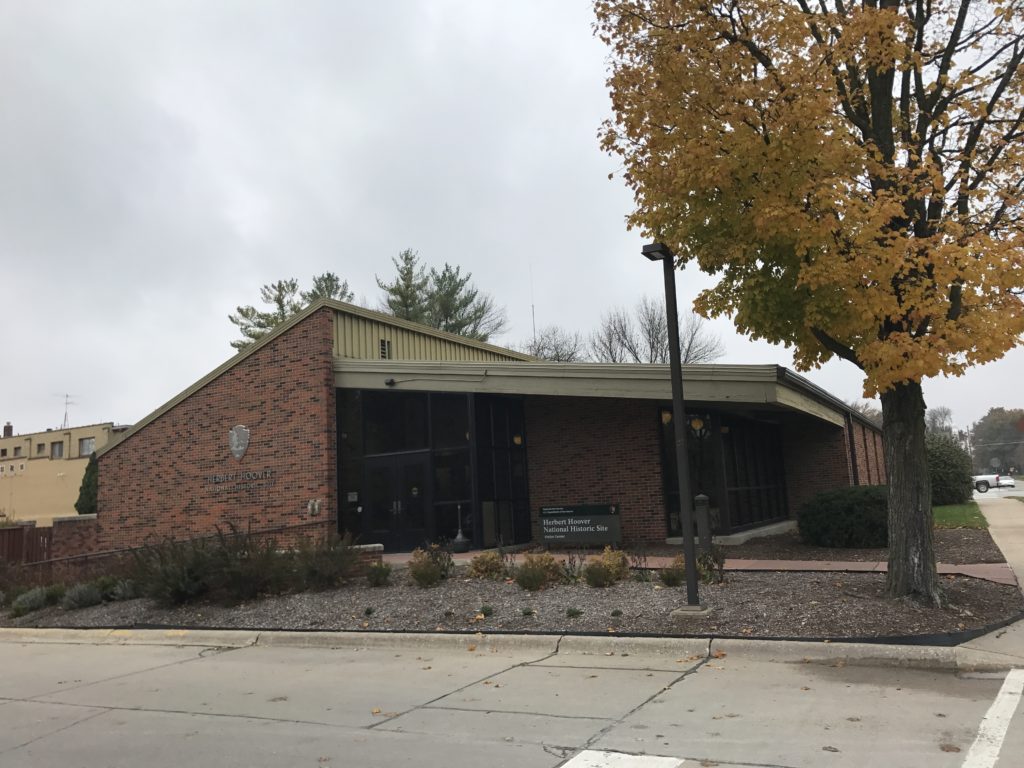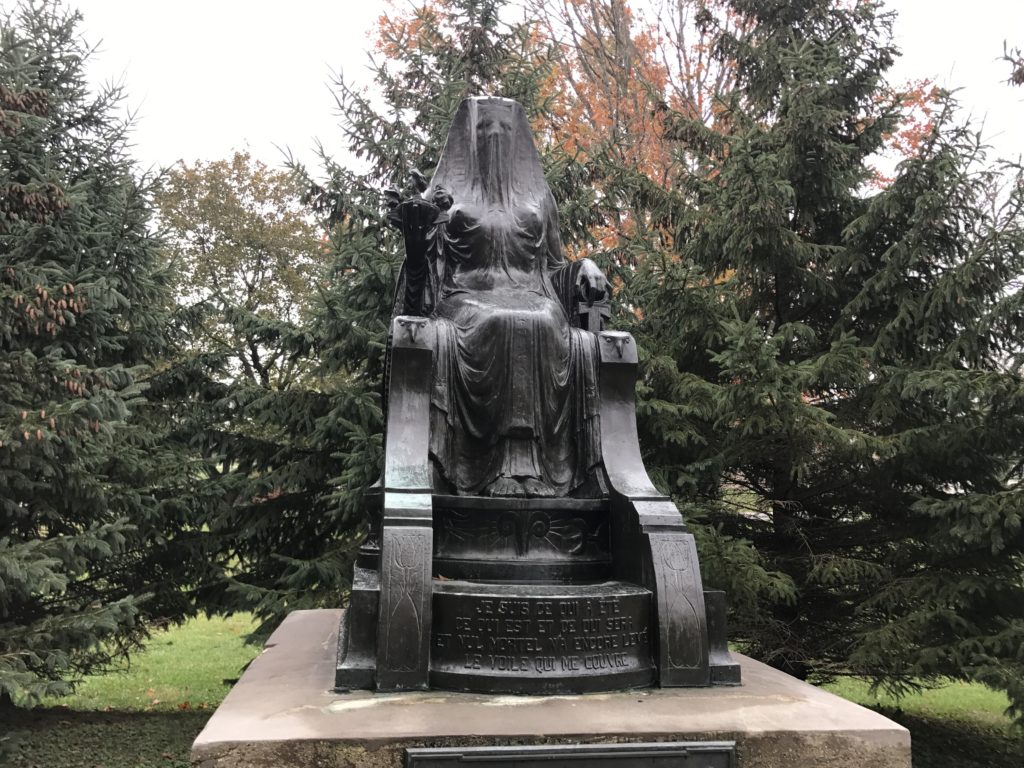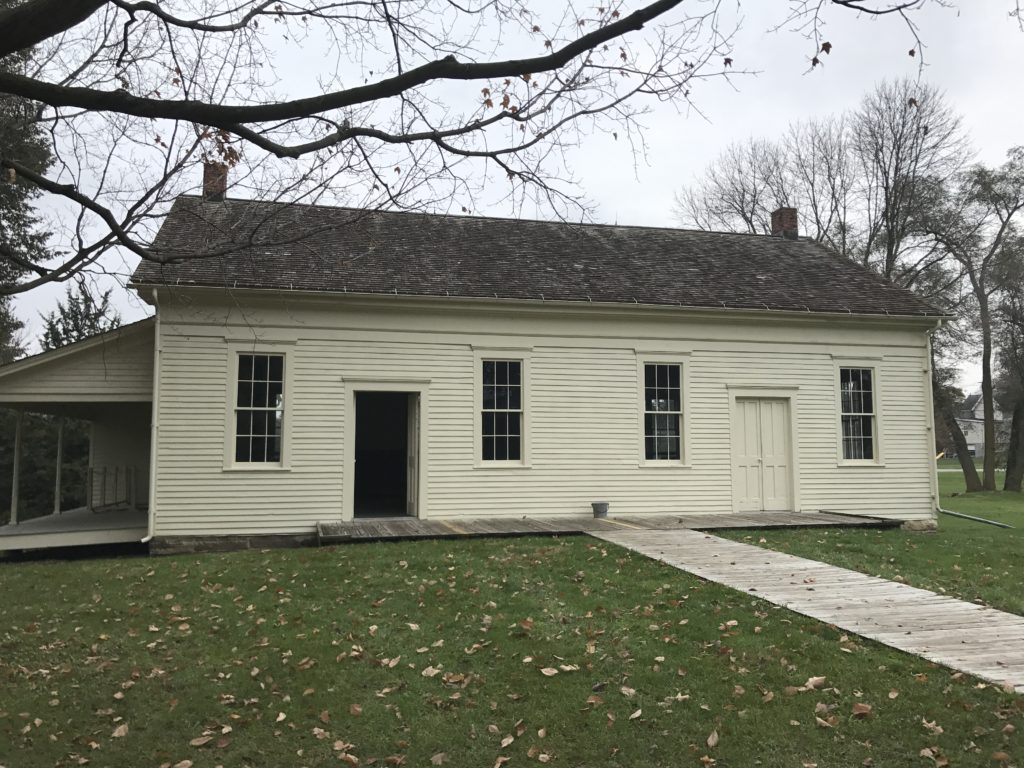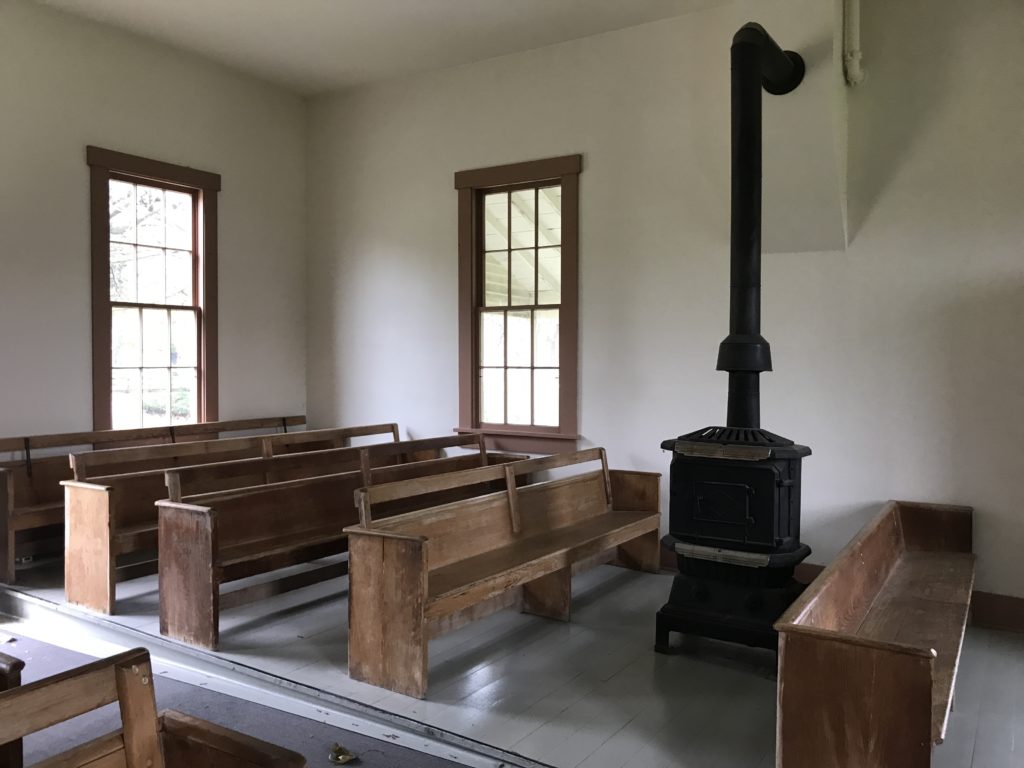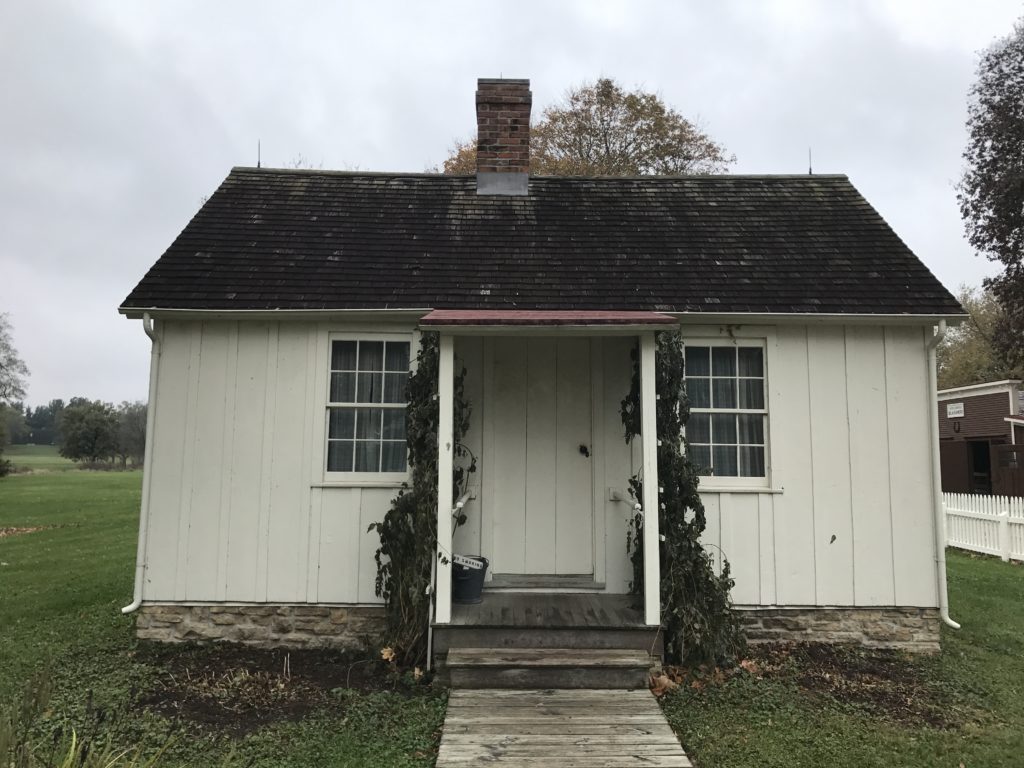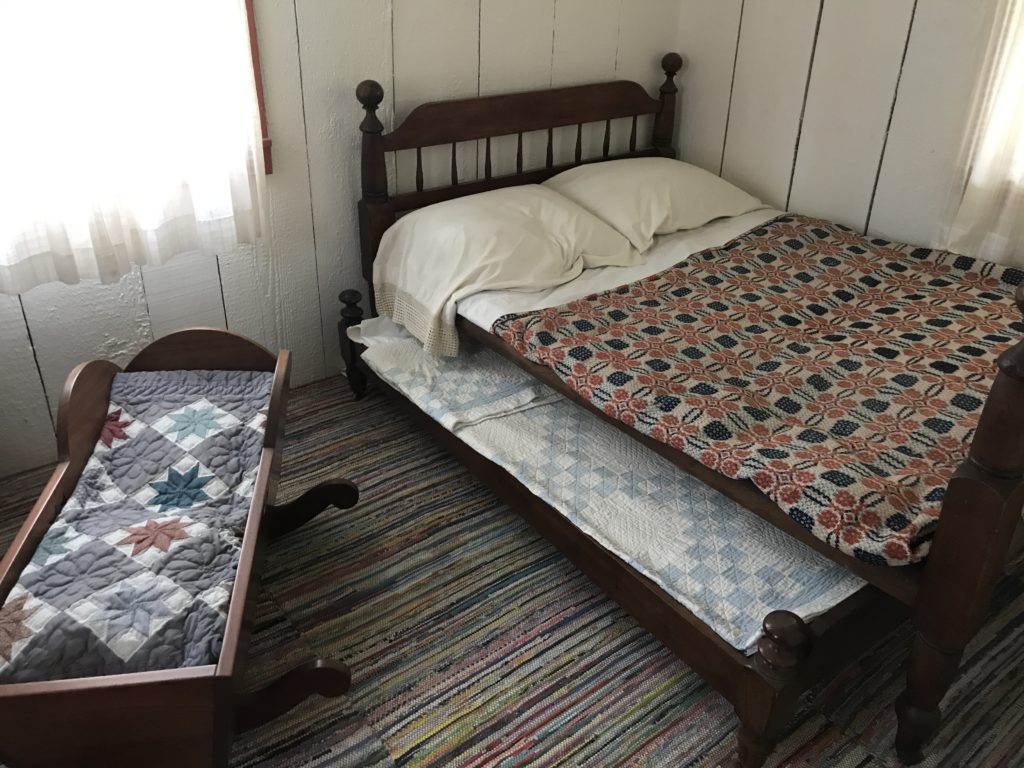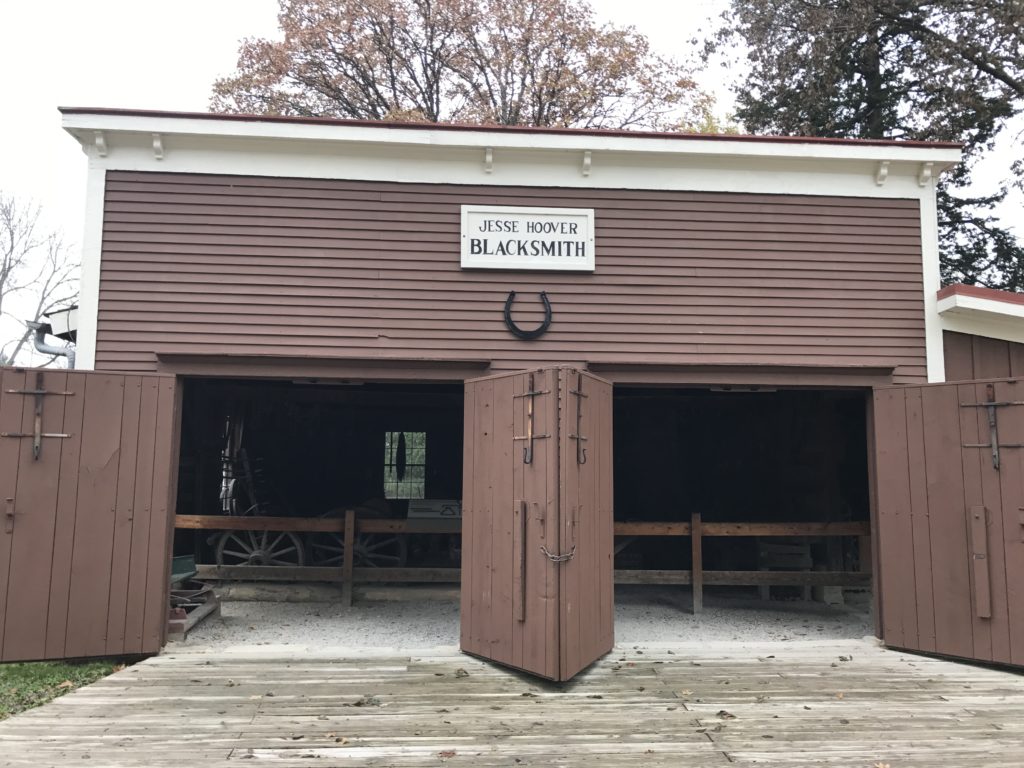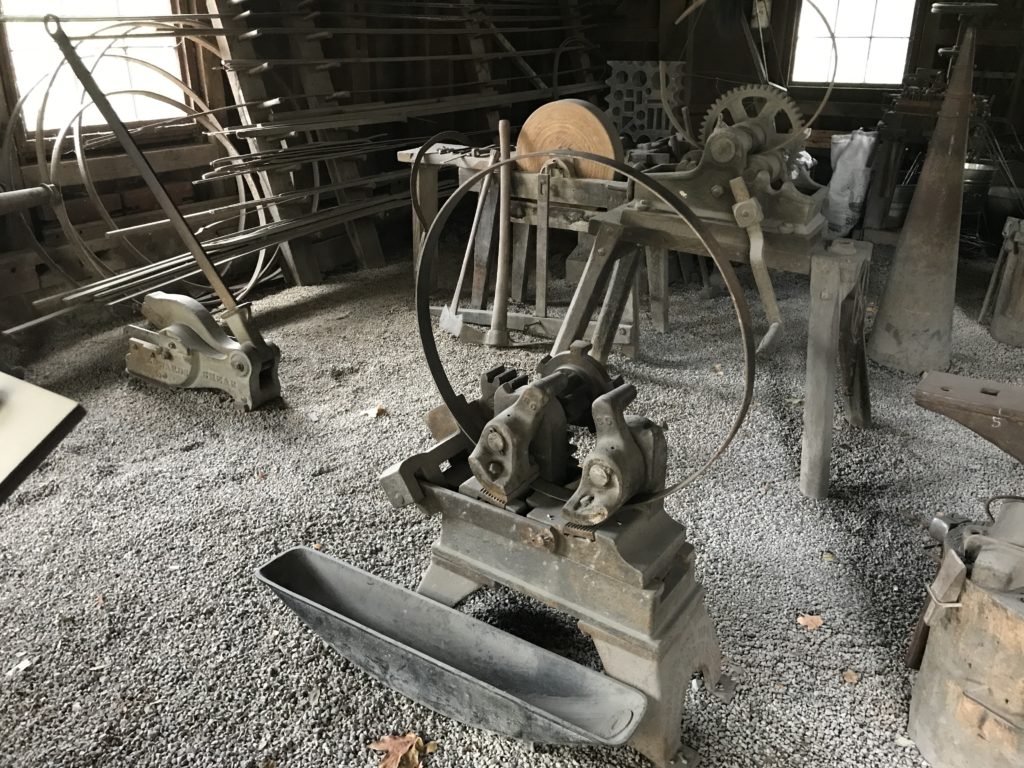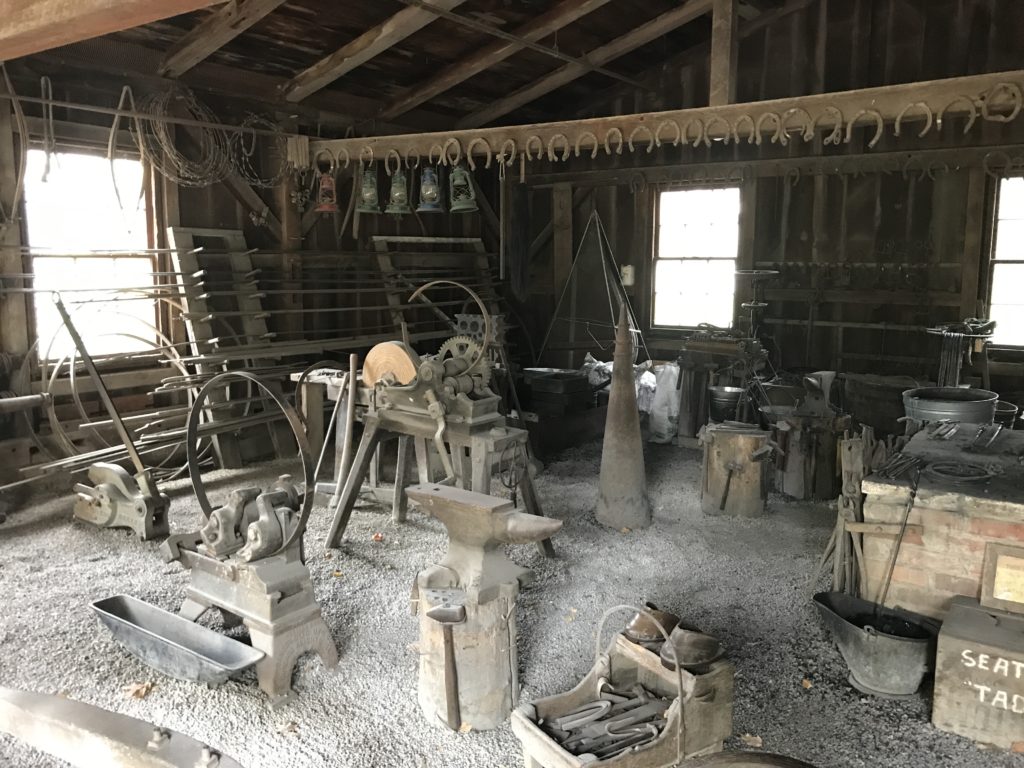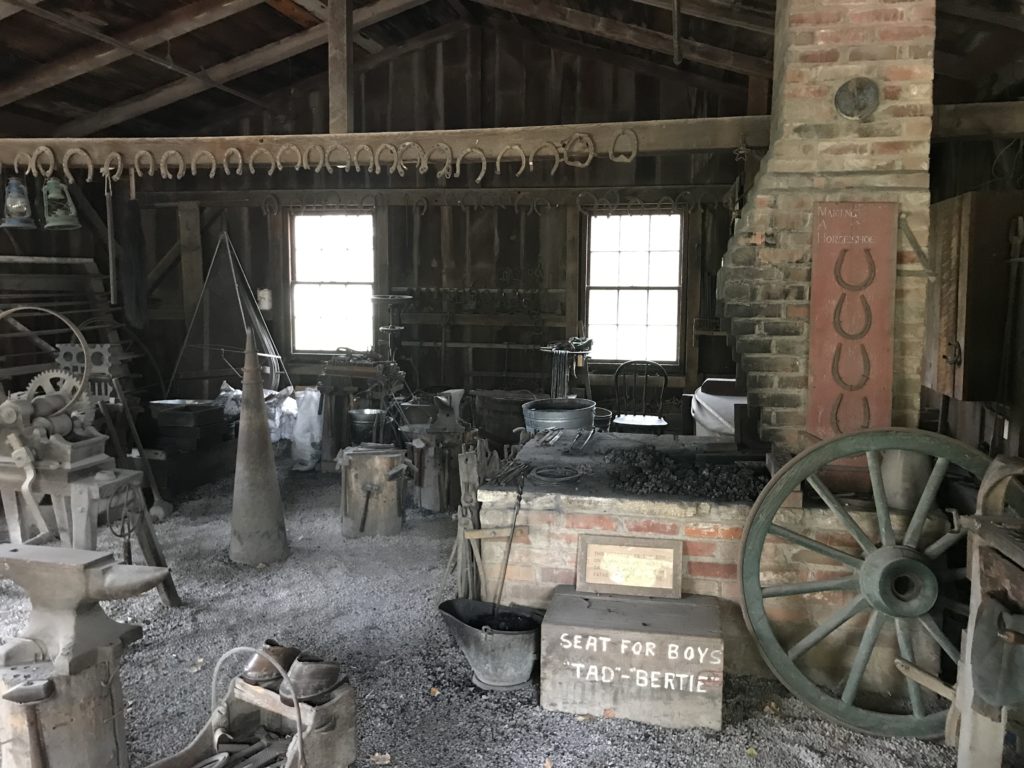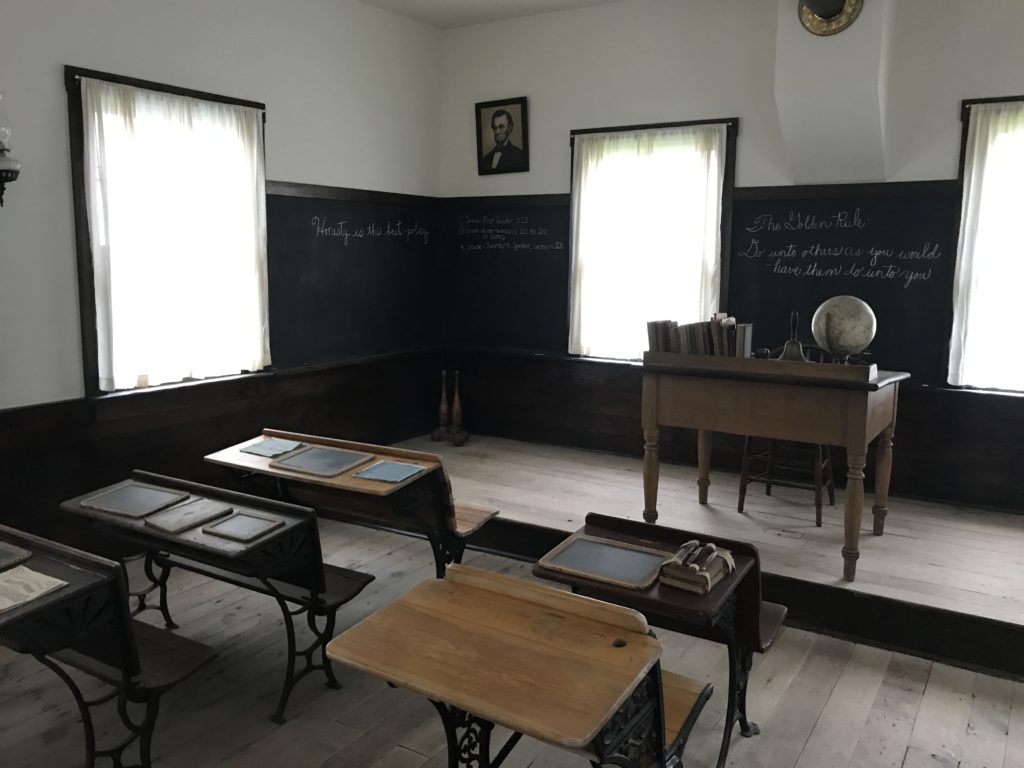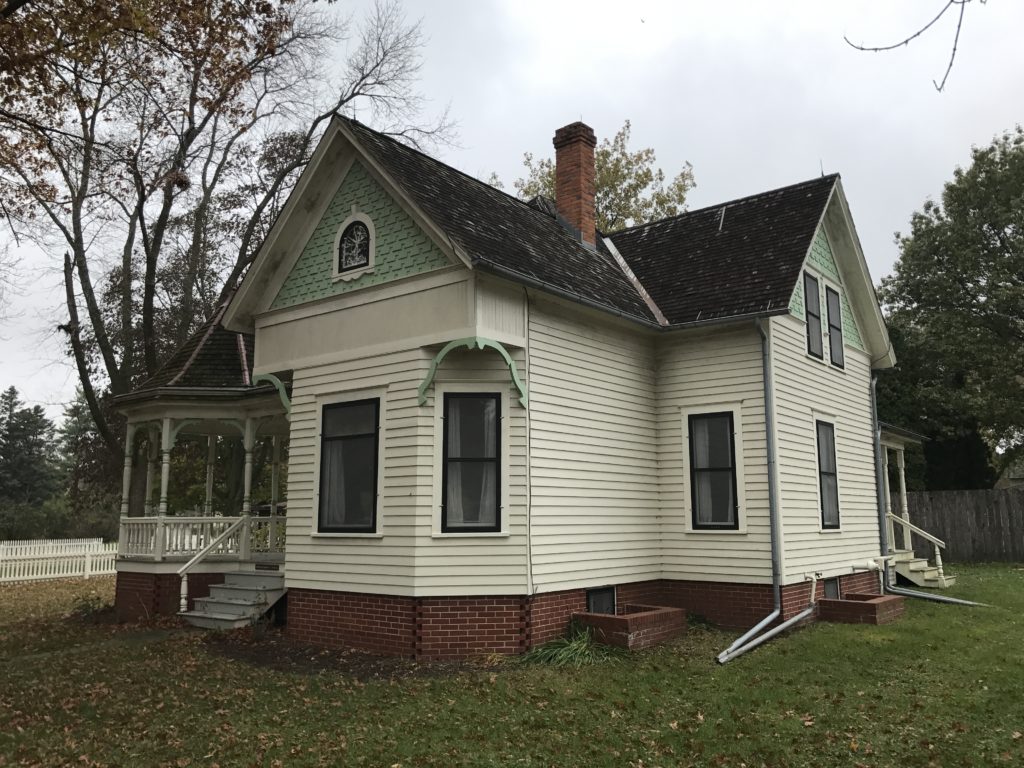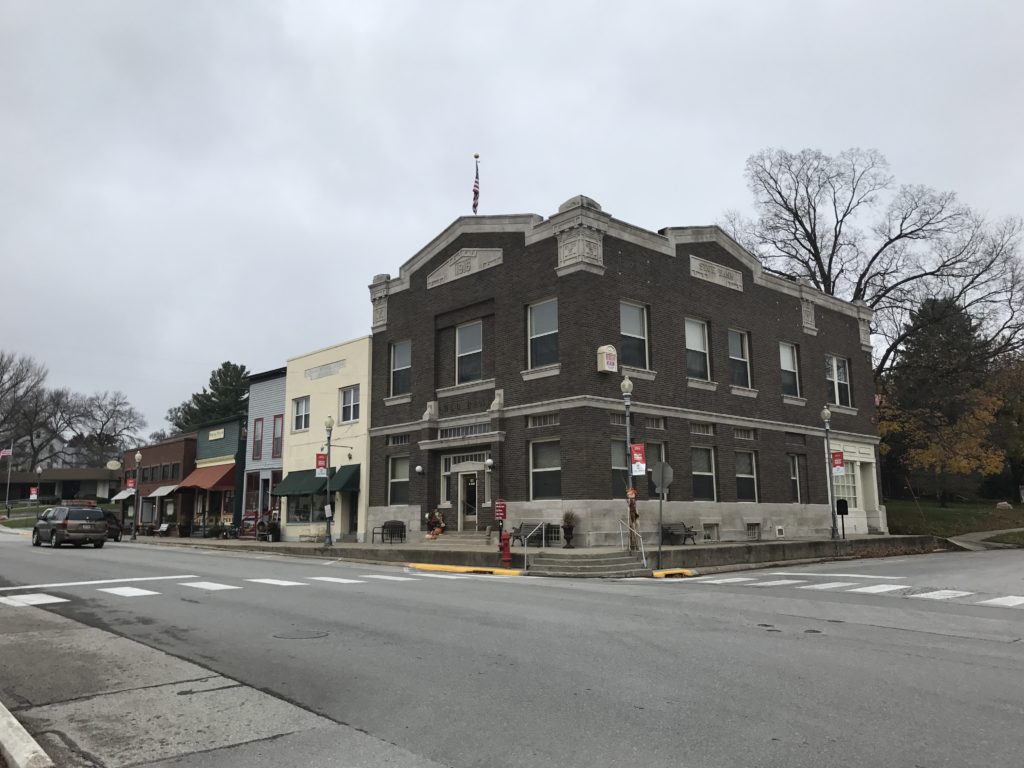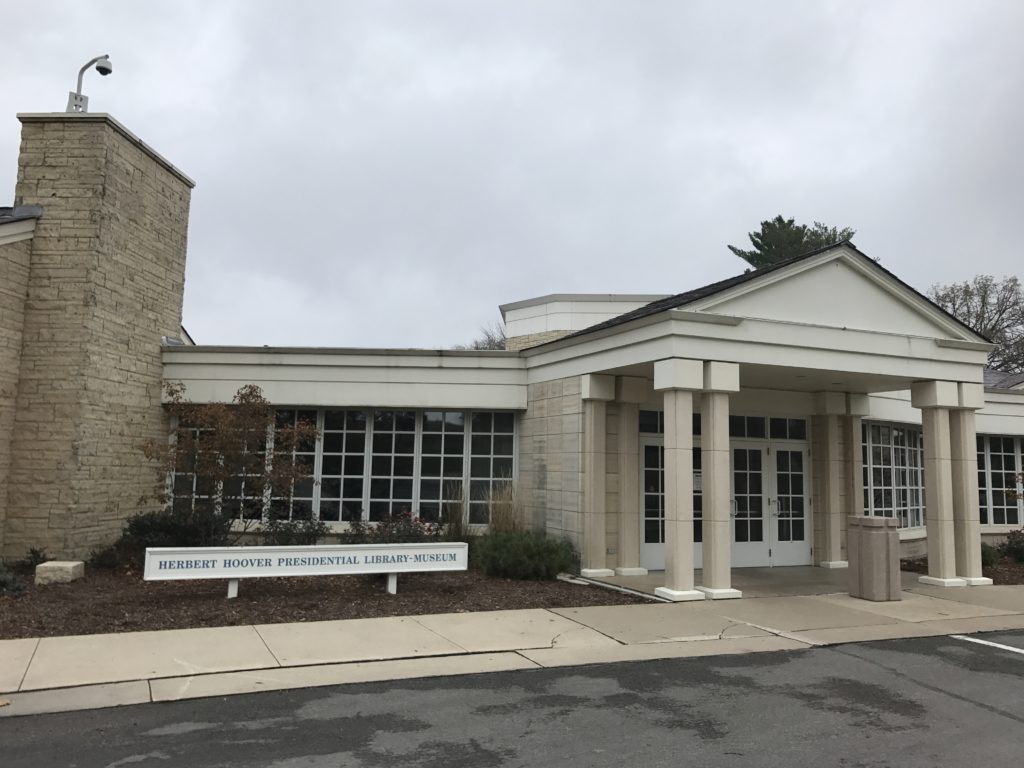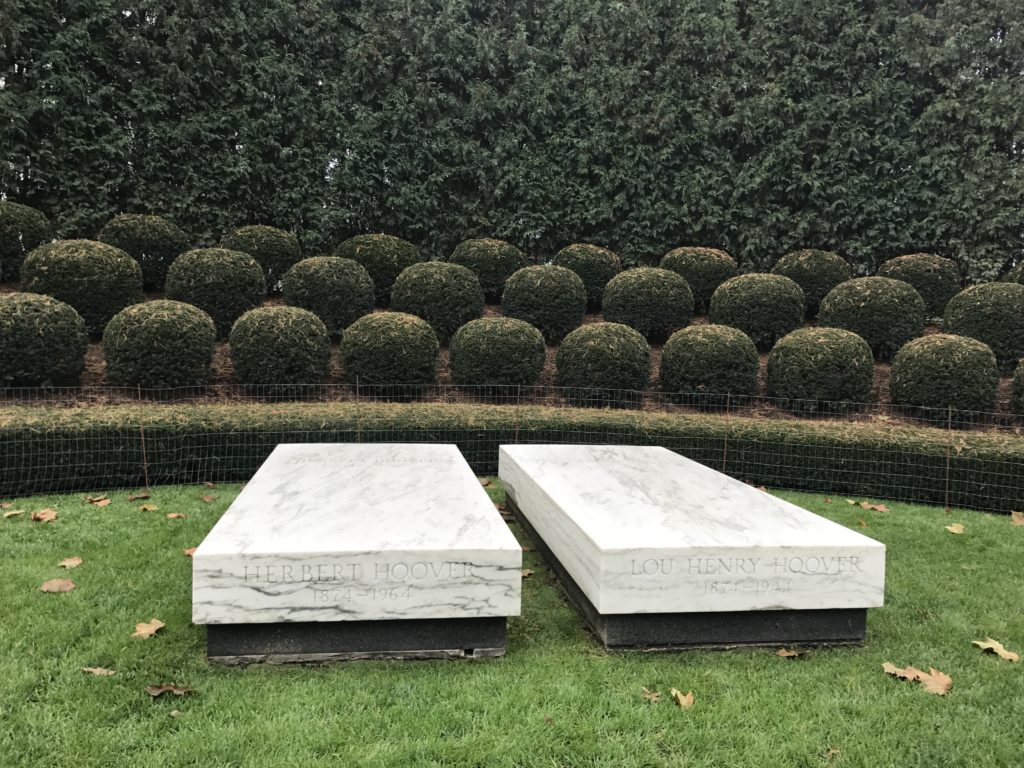Herbert Hoover National Historic Site in Iowa was our last National Park site on our journey from Washington to Ohio. Tom and I have driven by the exit on I-80 many times but never took time to stop. We figured it was now or never.
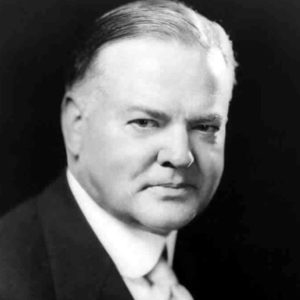 Herbert Hoover, the 31st President of the United States, was born in a two-room cottage in West Branch, Iowa in 1874. His father, Jesse, was a blacksmith who died of “rheumatism of the heart” when Herbert was just six. Four years later, Herbert’s mother died of typhoid fever. The children were split up and sent to live with various relatives. Herbert lived with his mother’s brother, Dr. Henry John Minthorn, and his family in Newbert, Oregon.
Herbert Hoover, the 31st President of the United States, was born in a two-room cottage in West Branch, Iowa in 1874. His father, Jesse, was a blacksmith who died of “rheumatism of the heart” when Herbert was just six. Four years later, Herbert’s mother died of typhoid fever. The children were split up and sent to live with various relatives. Herbert lived with his mother’s brother, Dr. Henry John Minthorn, and his family in Newbert, Oregon.
Herbert graduated from Stanford University in 1895 with a degree in geology. He worked for a time as a mining engineer in Australia. He married a classmate from Stanford, Lou Henry, in 1899. She accompanied Herbert with their two sons as he worked around the globe repairing “sick mines.” Herbert established his own international company of engineering consultants based in London. By the age of 40, Herbert was a self-made millionaire.
Wanting to live out his Quaker principles of kindness and generosity toward others, Herbert embarked on a life of public service. In 1914 he chaired the Commission for Relief in Belgium. In 1917 he became the United States Food Administrator under President Wilson. At the end of World War I, he became Director General of the American Relief Administration, responsible for feeding 350 million people in 21 countries.
As President, Herbert Hoover was blamed for the start of the Great Depression, even though the events that caused the depression started long before he was elected. Shantytowns of the unemployed were called “Hovervilles”. Millions of hungry people in the United States blamed Hoover for their hunger, even though his charitable work had always been about feeding the hungry. Hoover was not re-elected – much to his relief.
After serving as President, Hoover returned gratefully to building charitable organizations. He and his wife retired to California. Herbert was the Chairman of the Boys Clubs of America from 1936 until his death in 1964. He founded the children’s welfare organizations CARE and UNICEF. Hoover chaired two “Hoover Commissions” leading to the reorganization for greater efficiency of the Executive branch of government under Truman and Eisenhower. Lou Hoover died in 1944. Herbert lived to be 90 years old and died at his home in California in 1964.
Today the Herbert Hoover National Historic Site is set up like a small town with Hoover buildings. There is the restored home where he was born, his father’s blacksmith shop, the Quaker meetinghouse he attended as a child, and his early schoolhouse. A Visitors Center has a movie and a few museum exhibits. Most of the Hoover museum is located in the Presidential Library, also on the grounds. The Presidential Library, however, is administered by the National Archives and has a separate admission fee.
Tom and I enjoyed seeing the movie and walking around the grounds. We decided not to visit the Presidential Library and Museum. We saw the historic buildings, a statue of Isis donated by the grateful people of Belgium, and the gravesites of President and Mrs. Hoover. The National Park Service also restored an 81 acre tallgrass prairie, representing how the land looked before it was settled. You can walk a two mile trail through the prairie.
If you are driving along I-80 in Iowa, take a break and visit the Herbert Hoover National Historic Site. It is a good place to stretch your legs, learn a little, and enjoy the lovely small town of West Branch.

